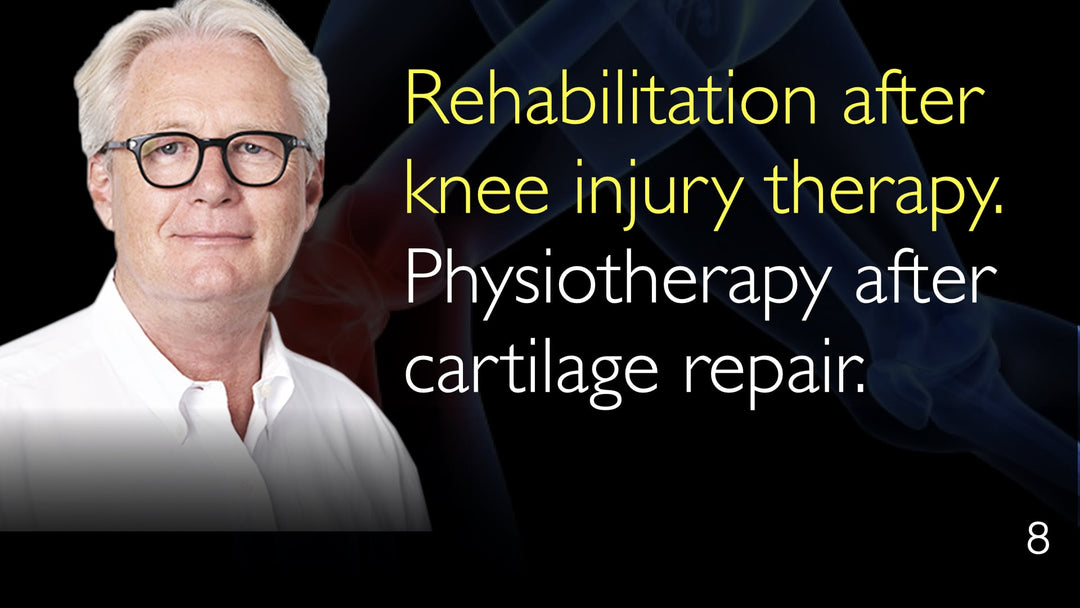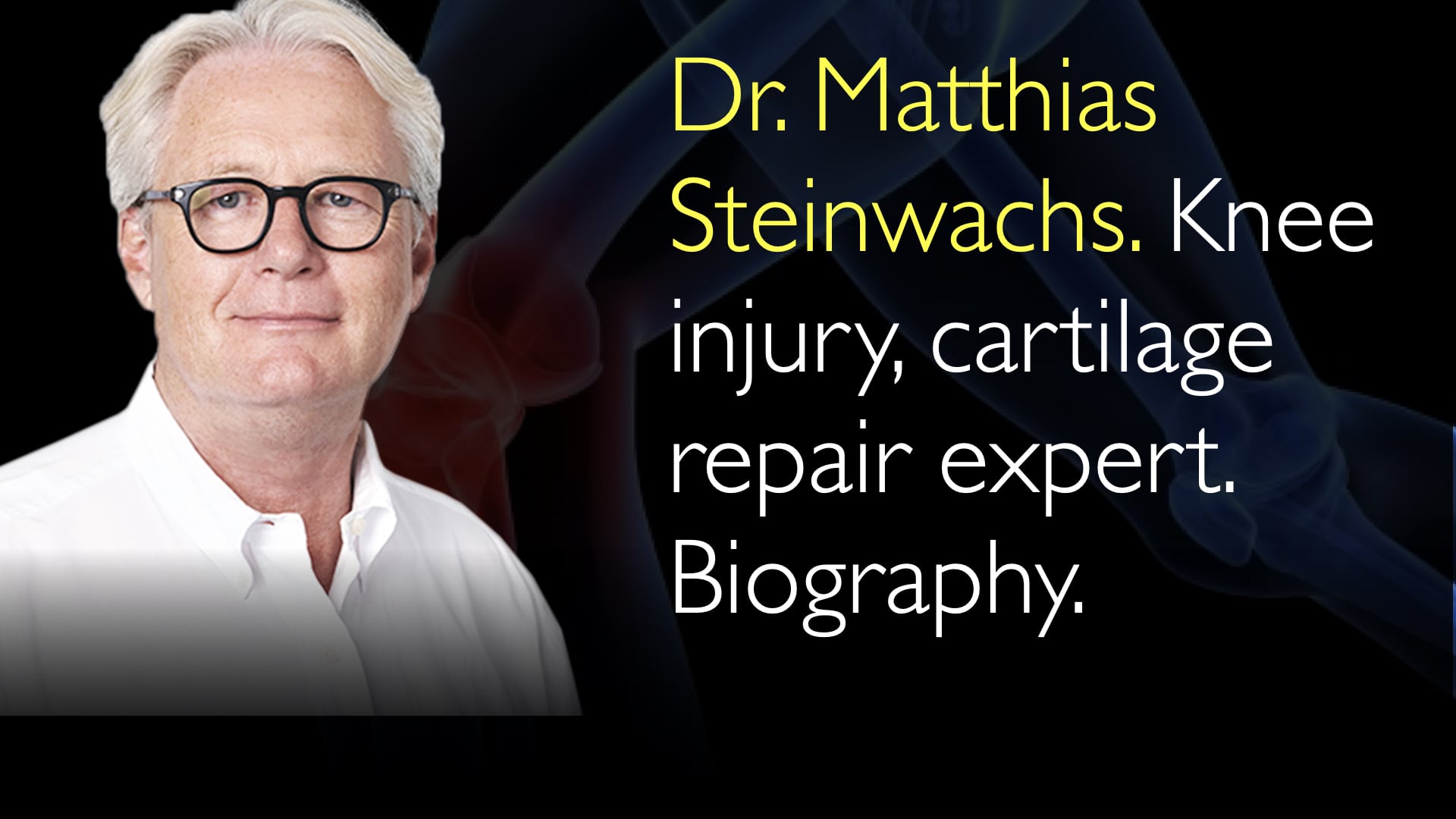O renomado especialista em reabilitação de lesões do joelho, Dr. Matthias Steinwachs, explica os protocolos modernos para recuperação pós-cirurgia. Ele detalha uma abordagem personalizada que combina mobilização precoce com restrições controladas. Dr. Steinwachs ressalta o papel crucial do movimento na cicatrização da cartilagem, defendendo o uso de aparelhos de movimento contínuo passivo (MCP) e injeções de plasma rico em plaquetas (PRP). O processo de reabilitação é cuidadosamente dividido em fases ao longo de vários meses, com o objetivo final de garantir o retorno completo à função normal e à prática esportiva.
Otimização da Recuperação de Lesões do Joelho: Protocolos Modernos de Reabilitação Pós-Cirúrgica
Navegar para a Seção
- Plano de Reabilitação Personalizado
- Mobilização Precoce e CPM
- Restrições Controladas de Movimento
- Controle da Inflamação com PRP
- Cronograma de Recuperação por Fases
- Retorno ao Esporte
- Transcrição Completa
Plano de Reabilitação Personalizado
O Dr. Matthias Steinwachs enfatiza que um plano de tratamento personalizado é essencial para a reabilitação bem-sucedida de lesões do joelho. Esse princípio se aplica tanto à intervenção cirúrgica inicial quanto ao plano de fisioterapia subsequente. Cada paciente apresenta uma combinação única de tipo de lesão, procedimento realizado e objetivos pessoais. O Dr. Steinwachs explica que adaptar o programa ao indivíduo garante a cicatrização ideal e a recuperação funcional.
Mobilização Precoce e CPM
Os protocolos modernos de reabilitação do joelho priorizam a mobilização precoce, frequentemente iniciada já no primeiro dia após a cirurgia. O Dr. Matthias Steinwachs afirma que esse movimento inicial é vital para os processos metabólicos, a capacidade de cicatrização e a nutrição articular. Um aparelho de movimento passivo contínuo (CPM) é comumente utilizado para promover a mobilização articular passiva. Isso ajuda a prevenir aderências e é um fator crítico para a recuperação da cartilagem, já que o movimento aumenta significativamente a atividade metabólica no tecido reparado.
Restrições Controladas de Movimento
Apesar de defender o movimento, o Dr. Steinwachs também recomenda restrições específicas na amplitude articular para proteger os tecidos em cicatrização. Em lesões que envolvem a patela ou a tróclea, por exemplo, é necessário evitar a flexão profunda do joelho inicialmente. Um protocolo comum envolve um aumento gradual do movimento. O paciente pode ser limitado a 30 graus por duas semanas, depois a 60 graus por mais duas semanas, antes de progredir para 90 graus. Uma estratégia fundamental é diferenciar entre movimento ativo e passivo, permitindo que o fisioterapeuta empurre suavemente a articulação um pouco além para melhorar a flexibilidade com segurança.
Controle da Inflamação com PRP
Controlar a inflamação é um objetivo primário na primeira fase da reabilitação do joelho. Os métodos incluem resfriamento da articulação e uso de medicamentos anti-inflamatórios. O Dr. Matthias Steinwachs utiliza frequentemente injeções de plasma rico em plaquetas (PRP) diretamente na articulação. Ele observa que o PRP equilibra efetivamente a resposta inflamatória, reduz a dor do paciente e inicia um processo biológico benéfico de cicatrização. Essa terapia biológica é um pilar de sua abordagem moderna aos cuidados pós-operatórios.
Cronograma de Recuperação por Fases
A reabilitação após a cirurgia do joelho segue um cronograma estruturado e faseado. As primeiras seis semanas correspondem a uma fase de proteção, envolvendo carga parcial com muletas e o uso de um aparelho de CPM em casa. A profilaxia de trombose também é padrão nesse período. Após essas seis semanas, os pacientes começam a apoiar o peso normalmente. A fase seguinte inclui terapia de treinamento médico para restaurar a amplitude completa de movimento, a capacidade de carga e a função sensoriomotora.
Retorno ao Esporte
O tempo necessário para retornar aos esportes depende inteiramente do tipo e da gravidade da lesão do joelho. O Dr. Steinwachs fornece prazos claros: um atleta com lesão ligamentar geralmente requer de seis a oito meses de reabilitação. Para procedimentos de reparo da cartilagem, um mínimo de seis meses é padrão antes que o retorno à atividade esportiva seja considerado. O Dr. Matthias Steinwachs conclui que as características da área de cartilagem restaurada e a situação individual do paciente devem ser totalmente integradas ao programa final de retorno ao esporte.
Transcrição Completa
Dr. Matthias Steinwachs: A reabilitação é crucial após o tratamento cirúrgico de lesão ligamentar do joelho e lesão meniscal. Também é fundamental após o reparo da cartilagem e seu tratamento.
Dr. Anton Titov: Qual é a abordagem moderna para a reabilitação após o tratamento de lesão do joelho? Como combinar métodos farmacológicos e fisioterapêuticos na reabilitação pós-lesão?
Dr. Matthias Steinwachs: Precisamos personalizar o conceito de tratamento para cada paciente. Isso vale tanto para a cirurgia de trauma do joelho quanto para o plano de reabilitação.
Na maioria das vezes, iniciamos a mobilização do paciente já no primeiro dia após a cirurgia. Acredito que a mobilização precoce é muito importante para os processos metabólicos, a capacidade de cicatrização, a nutrição e outros aspectos.
Também usamos um aparelho chamado CPM para mobilização passiva das articulações, a fim de evitar aderências e auxiliar na nutrição da cartilagem. O movimento articular é um fator muito importante para a cicatrização da cartilagem.
É necessário movimento na articulação. Caso contrário, a atividade metabólica na cartilagem fica baixa. A atividade metabólica na cartilagem reparada também se torna muito reduzida.
Também orientamos algumas restrições na amplitude de movimento após a reabilitação. Por exemplo, se há um defeito na patela ou na tróclea, é preciso evitar dobrar o joelho por algum tempo, pois o tecido está começando a se restaurar.
Normalmente, estabeleço um período de seis semanas para carga parcial. Recomendo uma restrição na amplitude de movimento inicialmente por duas semanas, geralmente a 30 graus.
Após mais duas semanas de reabilitação, aumentamos a amplitude para 60 graus e depois chegamos a 90 graus. Em etapas de 30 graus, o paciente avança ativamente, mas permito uma amplitude de movimento passiva conduzida por um fisioterapeuta para ir além em 30 graus.
Por exemplo, após duas semanas, os pacientes não ficam restritos a 60 graus de amplitude passiva, mas podem atingir até 90 graus de movimento articular. Dessa forma, é possível permitir maior flexão e melhor função da articulação lesionada, diferenciando entre movimento ativo e passivo.
Na primeira etapa da reabilitação, iniciamos com terapia para controlar a inflamação. Utilizamos resfriamento da articulação e medicamentos anti-inflamatórios.
Mas frequentemente aplico plasma rico em plaquetas (PRP) na área afetada pela lesão. O paciente recebe uma injeção de PRP diretamente no joelho.
Observamos que a injeção de PRP equilibra a inflamação de forma muito eficaz. A dor articular do paciente também diminui com essa abordagem.
Isso inicia um processo biológico de cicatrização da lesão. Por isso, faz todo sentido.
Também adotamos profilaxia de trombose durante as primeiras seis semanas, enquanto o paciente usa muletas. Cada paciente recebe um aparelho de CPM em casa, em sistema de aluguel, por seis semanas.
Isso compõe a fase de proteção. Após seis semanas, o paciente começa a apoiar o peso normalmente.
Em seguida, iniciamos a terapia de treinamento médico para restaurar a função normal do joelho. Trabalhamos para melhorar a amplitude de movimento, a carga e a função sensoriomotora.
O tempo para retornar à atividade física depende do tipo de lesão no joelho. Em uma lesão ligamentar, sabemos que um atleta levará cerca de seis a oito meses para voltar ao esporte.
Para o tratamento de reparo da cartilagem, geralmente são necessários no mínimo seis meses de reabilitação antes que o atleta possa retornar à atividade esportiva.
Cada tipo de área de cartilagem restaurada terá suas particularidades em relação ao plano ideal de reabilitação. É preciso integrar a situação individual de cada paciente em seu programa de reabilitação.





